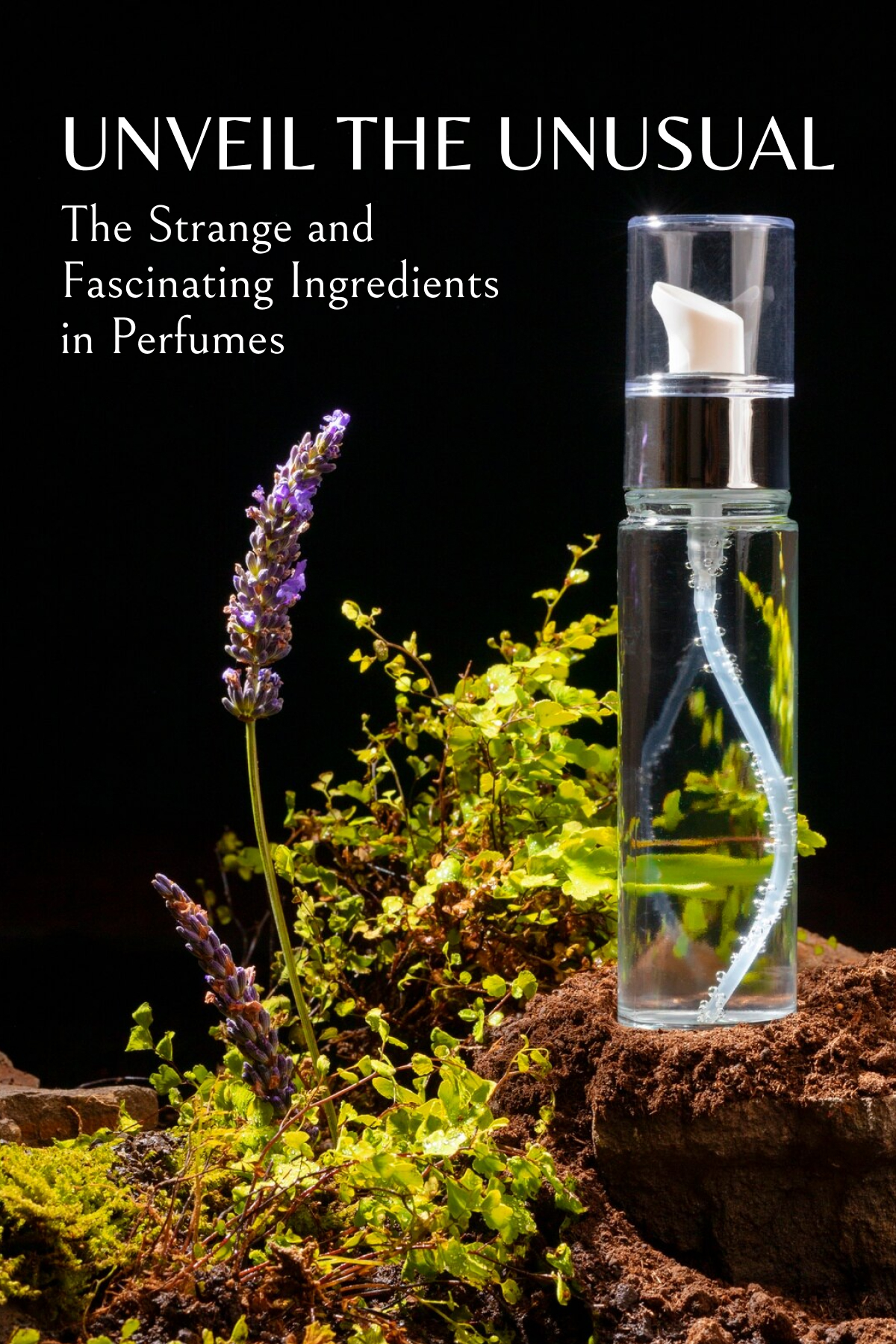Perfumes have captivated human senses for millennia, woven into the fabric of culture, history, and everyday existence. While many people are familiar with typical fragrance compounds such as rose, lavender, and vanilla, there is a world of perfumery that explores the remarkable and frequently weird. This blog post delves into some of the strange and beautiful elements found in perfumes, exposing the intricate art and science underlying their manufacture.
1. Ambergris, the Ocean’s Floating Gold
Ambergris, also known as “floating gold,” is a unique and highly valued component in the perfumery industry. This substance is produced in the digestive system of sperm whales and then discharged into the ocean, where it can drift for years before landing ashore. Over time, it acquires a distinct aroma that is both sweet and earthy, with traces of marine and animalic elements.
Despite its strange origin, ambergris has been prized for ages for its ability to fix and intensify other aromas. Its scarcity and the complicated procedure of its manufacture make it a precious and expensive addition to high-end perfumes. Additionally, green chypre perfumes often incorporate ambergris, enhancing their earthy, mossy notes with a long-lasting depth and complexity that appeals to sophisticated fragrance lovers.
2. Civet:
The Scent of the Wild Civet, produced from the glandular secretions of the African civet cat, is another unique perfume ingredient. Traditionally, civet was collected directly from the animals, but ethical concerns have led to the development of synthetic alternatives that approximate its peculiar musky odor.
Civet provides depth and warmth to perfumes, giving them a sensuous, animalic aspect. It is frequently used in oriental and chypre perfumes, where its powerful scent can be expertly mixed to create a harmonious and appealing fragrance.
3. Castoreum, the Essence of Beavers
Castoreum, derived from beavers’ castor sacs, has a deep, leathery scent. It was originally employed for therapeutic purposes, but its distinct fragrance characteristic led it into the world of perfumery.
Castoreum’s warm, resinous, and somewhat smokey aroma enhances the complexity and duration of perfumes. Modern perfumers frequently utilize synthetic versions of civet to mimic its aroma while avoiding animal cruelty. Castoreum is typically found in leather and oriental scents, adding a refined and long-lasting tone.
4. Musk, The Fragrance of Mystery
Natural musk, derived from the glandular secretions of male musk deer, has a rich history in perfumery. Its strong, animalic scent is renowned for its ability to give warmth, depth, and sensuality to scents. However, due to ethical and environmental issues, natural musk has been mainly supplanted with synthetic musks.
Synthetic musks, such as nitro and polycyclic musks, seek to recreate the alluring perfume of real musk while being more environmentally friendly and cruelty-free. Musk is still a staple in many perfumes, offering a soft, powdery, and long-lasting base note.
5. Hyraceum: Rock Rabbit’s Contribution
Hyraceum, also known as Africa stone, is a unique substance made from the fossilized dung and urine of the hyrax, a tiny animal found in Africa and the Middle East. These deposits harden over time, developing a complex perfume similar to musk, civet, and castoreum.
In perfumery, hyraceum is regarded for its deep, animalic scent, which lends a primordial and earthy quality to perfumes. It is employed in niche perfumes, where its unusual aroma can be enjoyed by individuals looking for unique and powerful fragrances.
6. Indole: A Paradox of Decay and Delight
Indole is a naturally occurring chemical found in certain flowers, including jasmine and orange blossom. Interestingly, indole has a fecal odor in high concentrations, but in lower amounts, it adds to the intoxicating floral aroma of these blossoms.
Perfumers expertly balance indole to increase the richness and headiness of floral smells. Its presence has the power to change a simple flower aroma into a luxurious and enticing experience, illustrating the ingredient’s interesting paradox.
7. Birch Tar, The Smoky Essence
Birch tar, derived from the destructive distillation of birch bark, has a pungent, smoky, and leathery scent. It has been used in traditional medicine and as a leather cure, but it also has a role in fragrance.
Birch tar lends a smokey, woody quality to scents, giving them depth and intensity. It is frequently used in leather scents, where its harsh aroma can evoke memories of well-worn leather products and campfires.
8. Calone:
The Marine Marvel Calone is a synthetic chemical that gives marine and aquatic scents their fresh, ozonic scent. Calone, discovered in the 1960s, has a characteristic watermelon aroma with notes of sea wind and maritime freshness.
Its distinct fragrance profile has made it a popular choice in modern perfumery, particularly for perfumes that conjure a sense of being by the sea. Calone gives a crisp, clear, and energetic quality to perfumes, making it a popular choice in many current compositions. What does chypre mean? Chypre refers to a classic fragrance family characterized by a blend of citrus top notes, a floral heart, and a warm, woody base of oakmoss, patchouli, and labdanum. The term “chypre” comes from the French word for Cyprus, inspired by the Mediterranean island’s natural scents.
9. Iso E Super, the Mysterious Molecule
Iso E Super is a synthetic fragrance molecule that has developed a cult following in the perfume industry. Iso E Super is known for its subtle, velvety, and woody perfume, which enhances other aromas and creates a mesmerizing aura surrounding the wearer.
What makes Iso E Super so intriguing is its versatility; it can smell different on each individual, reacting with the wearer’s skin chemistry to create a unique perfume experience. It is frequently utilized as a base note in contemporary fragrances, where its enigmatic nature lends depth and complexity.
Conclusion
The world of perfumery is a place where science meets art, and the limits of inventiveness are constantly pushed. The use of uncommon and exotic components displays perfumers’ ability and craftsmanship in transforming these bizarre things into enticing and unforgettable fragrances.
These uncommon elements, ranging from the ocean’s floating gold to the smoky scent of birch tar, offer depth, complexity, and fascination to the perfumes we love. The next time you spray on your favorite perfume, take a moment to enjoy the interesting journey of its ingredients and the craftsmanship that went into its creation.












